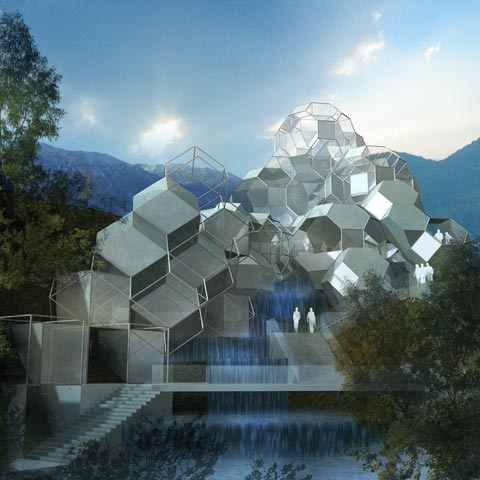
Archimedean Reflections

The physical realization of an idea is a mere reflection of its own ideal. Reality itself can be seen as a reflection of an ideal state. Instead of using Platonic Idealism and its respective solids, this year’s folly uses Archimedean Solids to help explicate what happens in this mode of perception. It frames the photo-essay which explores and demonstrates the layers inherent in this topic. All projects are reflective reactions to ideas we have digested by others who have come before us and who had previously evolved our world in the same manner. The architecture of this gallery, for example, uses Gregg Fleishman’s Rhombicube Cluster Structures as a design generator. By using forms that are imperfect reflections of their Platonic equivalents, we are able to create additive structures that can be effectively realized in the physical world. By using rigorous geometric principles that reflect nature’s processes, not just its physical form, we can arrive at forms that reflect nature in a deeper way. This contrasts an interpretation of nature which is based on imitating what it looks like. Reflections, in this context, are not just flat mirrors. The reflectors we use give us anomalies that can provide experiential complexity. In our world, especially today, the reflection of itself is what is real. This leads us to the realization that focusing on a reflection, and not the object beyond, can drive us to create visionary solutions for tomorrow. The digital world is the virtual mirror we can use to simulate natural phenomena and explore our relationship to representation in general. We can also sense that our perception of memory and our projections of the future are what grind this reflective glass. This text itself is a reflection of one that actually makes much more sense.
short animated exploding axon showing primitives (1.5mb wmv)
rotating animated exploding axon showing primitives (5.5mb wmv)